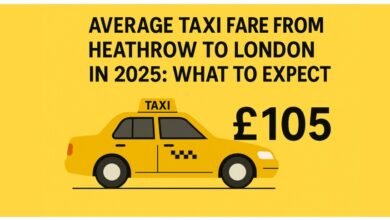Why Virtual Event Platforms Are Transforming Sales and Marketing in 2025

Sales and marketing teams are facing an evolving reality: audiences expect engaging, personalised experiences delivered seamlessly online. Whether launching a new product, training clients, or hosting a thought‑leadership event, success hinges on connection, data insight, and brand consistency. That is why virtual event platforms have emerged as indispensable tools for modern business engagement.
These platforms go beyond simple video streaming. They deliver rich, scalable experiences, live and on demand, that can be tracked, analysed, and optimised for real return. For sales and marketing professionals striving to stand out, understanding and leveraging these tools is now essential.
What Makes the Best Virtual Event Platforms Tick
Not all virtual platforms offer the same level of sophistication. The best solutions provide more than broadcast capability, but also features like branded landing pages, interactivity, lead scoring, and integration are critical.
A mature virtual event platforms solution, such as the one from ON24, allows organisations to deliver customised, polished events tailored to brand identity. It supports webinars, digital conferences, breakout rooms, and networking lounges while funnelling engagement data directly into CRM and marketing tools. This level of integration ensures that every interaction contributes to pipeline insight and ROI.
Why Virtual Events Are Driving Engagement and Pipeline Growth
Recent industry research indicates that virtual events deliver superior results when executed thoughtfully. According to research featured in the Demand Gen Report, nearly two‑thirds of marketers surveyed in 2022 identified virtual events or digital experiences as one of their top engagement tactics. Nearly all also planned to increase their investment in virtual events over the year.
While the novelty of digital formats has worn off, the value remains. Well‑structured virtual events foster deeper interaction via live Q&A sessions, resource downloads, polling, and audience feedback loops. They also enable post‑event content repurposing. As reported by Markletic, 63% of organisers intend to raise spending on virtual events in 2025, highlighting growing confidence in the model.
Key Features That Drive Impact for Sales and Marketing
When evaluating platforms, here’s what should be top of mind:
- Interactivity tools: Features like live polling, chats, and Q&A allow real-time audience participation and signal buyer intent.
- Lead capture and scoring: Track user behaviour during sessions for better qualification and follow‑up.
- Seamless integrations: Sync attendee data with marketing automation and CRM platforms for unified workflows.
- On-demand access: Post‑event access increases reach and extends the content lifecycle.
- Analytics dashboards: Metrics on engagement, session duration, content downloads, and more help quantify performance.
Platforms offering these capabilities support both marketing and sales teams, enabling content‑driven lead generation and pipeline acceleration.
How Virtual Events Elevate Each Stage of the Funnel
Far from isolated campaigns, virtual events now play a strategic role across the buyer journey:
- At the top of the funnel, webinars and online panels build visibility and thought leadership.
- Mid‑funnel, product demos and interactive events allow deeper evaluation.
- Bottom of funnel, dedicated customer sessions and executive roundtables help close deals.
Furthermore, content created during events, clips, guides, recordings, can be repurposed across email, social and website channels for continual engagement.
Overcoming Common Challenges
Without careful planning, virtual events can fall flat. Common pitfalls include:
- Inadequate promotion—resulting in low attendance despite strong content.
- Lack of interactivity—leading to passive watching instead of active engagement.
- Failure to integrate data—so follow‑ups and leads vanish into silos.
- Low follow‑through—where content is forgotten once the event ends.
A capable platform helps you avoid these by offering flexible registration flows, engagement widgets, straightforward integrations, and replay access, allowing events to deliver maximum impact well beyond the live session.
Trends Shaping the Future of Virtual Events
Looking ahead, virtual format innovation continues:
- Increasing use of AI to personalise agendas, recommend sessions and surface high‑intent leads in real time.
- Hybrid event features that blend in‑person and digital elements within the same experience.
- Embedded networking and one-on-one meeting tools make virtual experiences more social and less static.
- Live translation, captioning, and gamification—all boosting accessibility and retention.
Gartner’s Magic Quadrant for Event Technology Platforms highlights the growing demand for unified event ecosystems that support both virtual and hybrid events across formats.
Calculating ROI: Metrics That Matter
Sales and marketing teams want to understand the impact directly. Key performance metrics include:
- Registration-to-attendance rate
- Live interaction levels (polls, Q&A, resource clicks)
- Time spent in sessions and across multiple sessions
- Lead conversion rates and qualifying activity
- Content downloads, CTA clicks, replay usage
Combined with the impact on pipeline and revenue, these data points help justify event investments and refine future strategy.
Real-world Applications for Sales & Marketing Teams
- Product launches: Use interactive live demos combined with breakout Q&A for capturing immediate interest.
- Customer training: Host closed sessions with on-demand replays for scalable education.
- Executive panels: Build thought leadership and nurture C‑level engagement.
- Sales enablement: Integrate live sessions with follow-up content, scoring behaviours and capturing high-quality leads.
These applications show how virtual platforms drive measurable business outcomes rather than just event attendance.
Final Takeaway
For sales and marketing professionals, virtual events have evolved into strategic assets, not just stopgap measures. The best virtual event platforms combine branding, interactivity, and deep analytics within unified systems designed to scale across audiences and use cases.
By adopting platforms built for engagement, integration, and insight, teams can deliver better experiences, capture higher-quality leads, and build sustainable pipelines. The digital event landscape is maturing, and those ready to lead are already leveraging these tools to win in a digital-first world.



